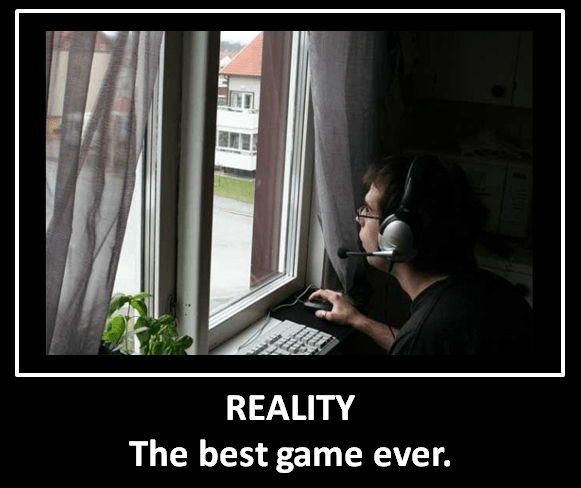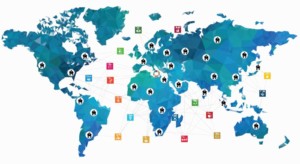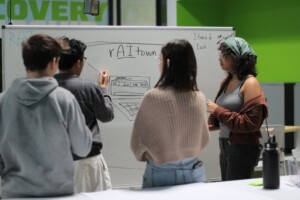All the World’s a Game
If Shakespeare were alive today (read: gamer), his famous line in “As You Like It” would read like this:
All the world’s a game. All the men and women are merely gamers. They all have their pre-orders and buy backs. And one person will play many games in a lifetime.
The analogy continues . . . .
Life gamers face challenges and obstacles. They recognize the rewards of both the silo adventure and collaborating with others. They live in a world with rules that are both written and unwritten. Unscrupulous cheating leads to penalties and ostracization. Short cuts, though, from smart thinking are rewarded. Gamers can make “the game” better and are subsequently rewarded with great status and fortunes. Gamers can play life safe and be satisfied to just finish or they can take a risk and be great. Life is best when the challenges are just outside of the gamers’ comfort zone. Easy rewards are not cherished. Gamers want an experiential and visual life adventure. They expect to collect tools along the way, build resources, and gain experience that they can show off. They have public avatars to showcase their journeys to the world and a private side where they conceal their true identities, only revealing small pieces at a time to their inner most circle, establishing trust and true partnerships.
Okay, what part of that don’t we want in our classrooms?
We usually define gamification as bringing “game mechanics” into the classroom, but there’s a piece that we are missing, and it’s really the most important piece. Gamification also includes “game thinking,” and it’s that game thinking where we keep missing out as educators.
Educational gaming is changing. Ed researchers are becoming more involved; although, that comes with some baggage. Kids can smell education on a game from far away. Keep in mind, we need to make the classroom more like gaming, not make gaming more like education . . . not if we want the benefits and rewards that the gaming world is benefiting from.
Before 2003, it was pretty much game designers doing their own thing, followed by kids learning and being absorbed in their complex and multi-level games in a way that was unthinkable with most of education.
Something unexpected occurred, though. Well, namely Facebook occurred … along with games like Farmville and Mafia Wars. This brought a social connection to gaming, a connection to our real friends. Game leaderboards started giving us hints on how to beat our friends in front of us on the leaderboard. That little status was strangely important to us and fun, too!

This is accelerated in our Generation Z crowd. They don’t have clear lines of demarcation between reality and gaming. Everything from Reality TV shows to Xbox Live to Foursquare have virtually eliminated those distinctions. Apps like Geocaching and Nike Plus continue to narrow the gaming-reality gap.
Corporate America was an early adopter, way ahead of education. Ever hear of Weight Watchers points? Talk to anyone having success with that. The points are shaping (leaving in the pun) their behaviors. The same is true with with Ford Fusion. Ford’s hybrid car rewards drives for fuel-efficient driving by turning leaves green on the dashboard.

Crazy? Hang with me and check out the Speed Camera Lottery in Sweden. It’s a speed camera that subjects speeders to tickets similar to what we have here in many states. But they’ve gamified this in Sweden. There they also record non-speeders and automatically enter them into a lottery where they can win the fines paid by the speeders. Results: 20% drop in speed.
Educators are catching up in this behavior modification, though. Class Dojo is our shining star.
Game Thinking Psychology
There are three important points in gaming psychology that should find their way into the classroom.
The Leaderboard: The psychology behind this game thinking is important. This is more than just students competing against each other. We have report cards and honor rolls for that. Now we have a chance to promote good habits that will lead to better grades and scores. Promoting this foundation is important in the life-long learning process. Now teachers can award points or badges for students who organize their work, work at home, access content outside of class, tutor others, attend tutoring, participate in class, maintain calendars and checklists, and make real-world connections. You know, the things that the best students do.
If designed right, the game mechanics could inspire kids to be better students, not just by scores and leaderboards, but by encouraging behaviors that lead to becoming better students.
We must have a way for all students to get a chance on the leaderboard. A bad leaderboard can be a disincentive. If there’s no way for a gamer to crack the Top 10 on a leaderboard, they have less incentive to play. Teachers can either break down tehir leaderboard into class “regions” or “districts” or they can create leaderboards for specialty areas, like “class helper” or “community connections” or “mentoring.” Teachers should show pathways that help students rise on the leaderboard. What does it take to move up? Here’s how that conversation might go:
You’re lacking points in organization. We start each day with a Jump Start exercise that we turn in at the end of the week. I know that you do those, but you tend to lose one or more of them by the end of the week, and that has a bad effect on your weekly grade. Why don’t you spend some time on a plan that helps you organize your notebook in a better way to keep track of your jump start assignments. Outline your plan on paper or or use this cool web tool called Lino. Then redo your notebook and show that to me by Wednesday. I bet you’ll earn a Productivity Badge AND score better on your weekly work.
What if students received badges for parent/big-brother check ins? Find a way to involve parents and let that be a payoff to encourage that family connection. Maybe parents could redeem points for game tickets to avoid situations like this.
Lee Sheldon, while at Indiana University, found the whole traditional grading system to be out of whack. He retooled his gradebook to reflect experience points or “XP” as gamers call it.
Students would level up throughout the semester in Sheldon’s class. How was his success? Participation, homework, and grade were all dramatically up, all of which Sheldon attributes to his gamified grade book.
Time on task: Engagement is the key here. “I’ve spent a lot of time on this. It must be important” is the underlying thinking that we want to establish in students. Kids will spend four hours trying to scale a wall in a game. Imagine if that game were grammar based or had a times-table connection.
Rewards: We need more carrot, less stick if we want to shape behavior. Status is a reward; otherwise, Farmville, Foursquare, and Fantasy Football would never have taken off. Those old loyalty or reward programs always rewarded participants with money or goods and services. Not so any more. It’s all about status.
Fluid Intelligence
Is there really any evidence that gaming is going anywhere in education and that it will amount to anything? Well, here’s an interesting statistic to think about. The measure of fluid intelligence (problem solving) has been on the rise in U.S. IQ scores since the 1990s with an average increase of .36 points per year. Crystallized intelligence (using skills and knowledge), on the other hand, has remained flat. In other words, intelligence is up, but test scores are down. How is that possible?
Game designers, naturally, point right to gaming for the increase in fluid intelligence, leaving education to deal with the crystallized intelligence fallout. Advanced, complex MMO gaming built its foundation in the early 90s. It’s not just gamers who have made this connection between increased fluid intelligence and gaming. The United States military also believes that gaming has led to this steady increase in fluid intelligence. Keep in mind that the military has the largest chunk of our budget. If our military were a nation, it would have the world’s 19 largest budget, and they spend 16 percent of their budget on research and development. Education, on the other hand, spends less than 1 percent of its much smaller budget on R&D.
The military ushered in digital gaming more than a decade ago to train everyone from front-line ground troops to fighter pilots to intelligence analysts, and they can’t figure out why the education sector has not followed.







Andrzej
Good article. I like that you mention that a poorly conceived leaderboard can lead to de-motivation. Same is true of all extrinsic rewards when they are applied to anything beyond the most basic tasks. It is worth looking into the research that has been done on the effect of extrinsic rewards on intrinsic motivation, it really is surprising!
In education these do work as the actual intrinsic motivation is the learning experience. You get just as much of a buzz from learning as you do from playing - depending on the teacher of course!
You have to find the intrinsic motivation in every task you can, possibly using things like badges and points to reward, recognise or just give a little push.
As Mary Poppins said "There is an element of fun you find the fun and snap! The job's a game"